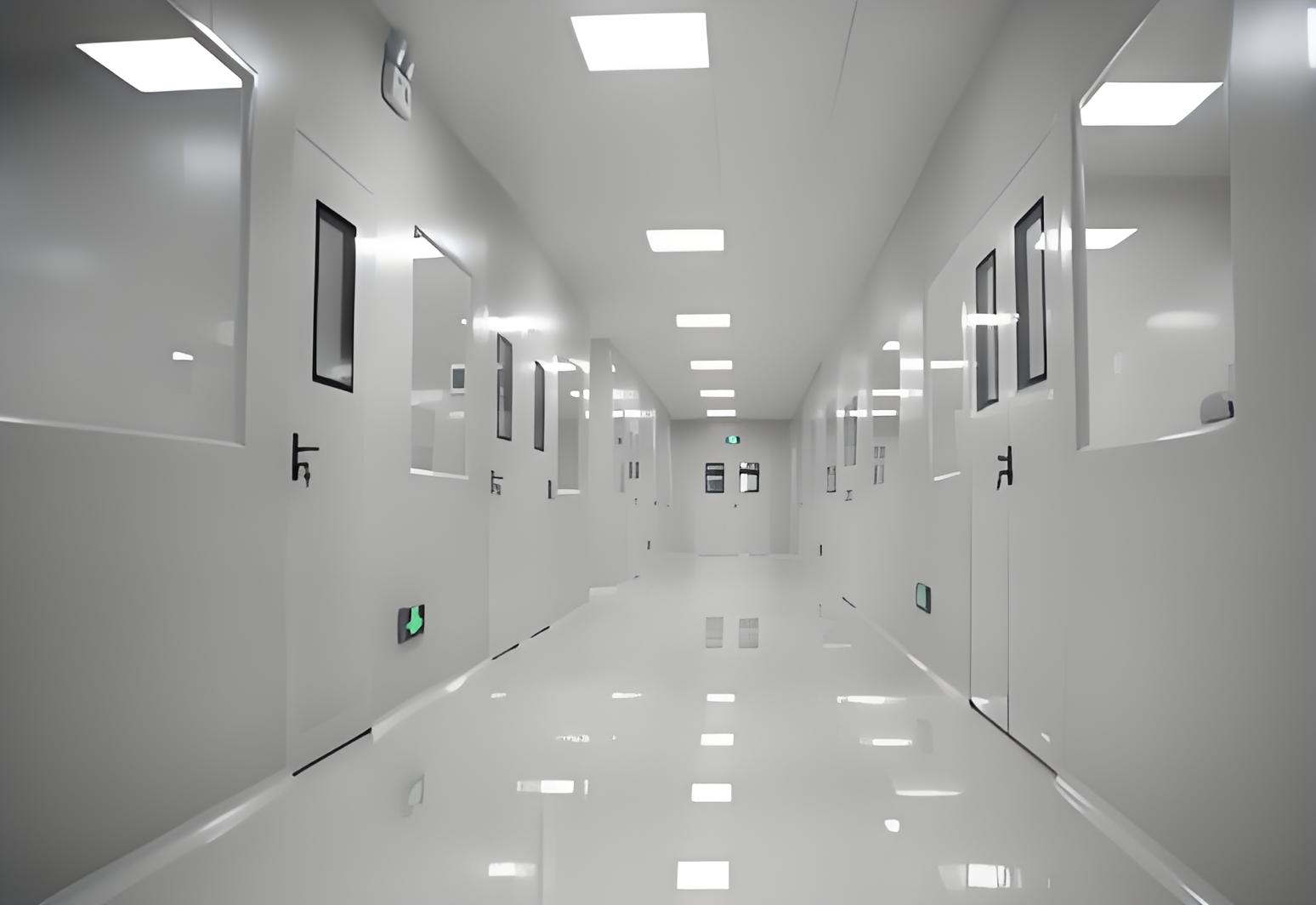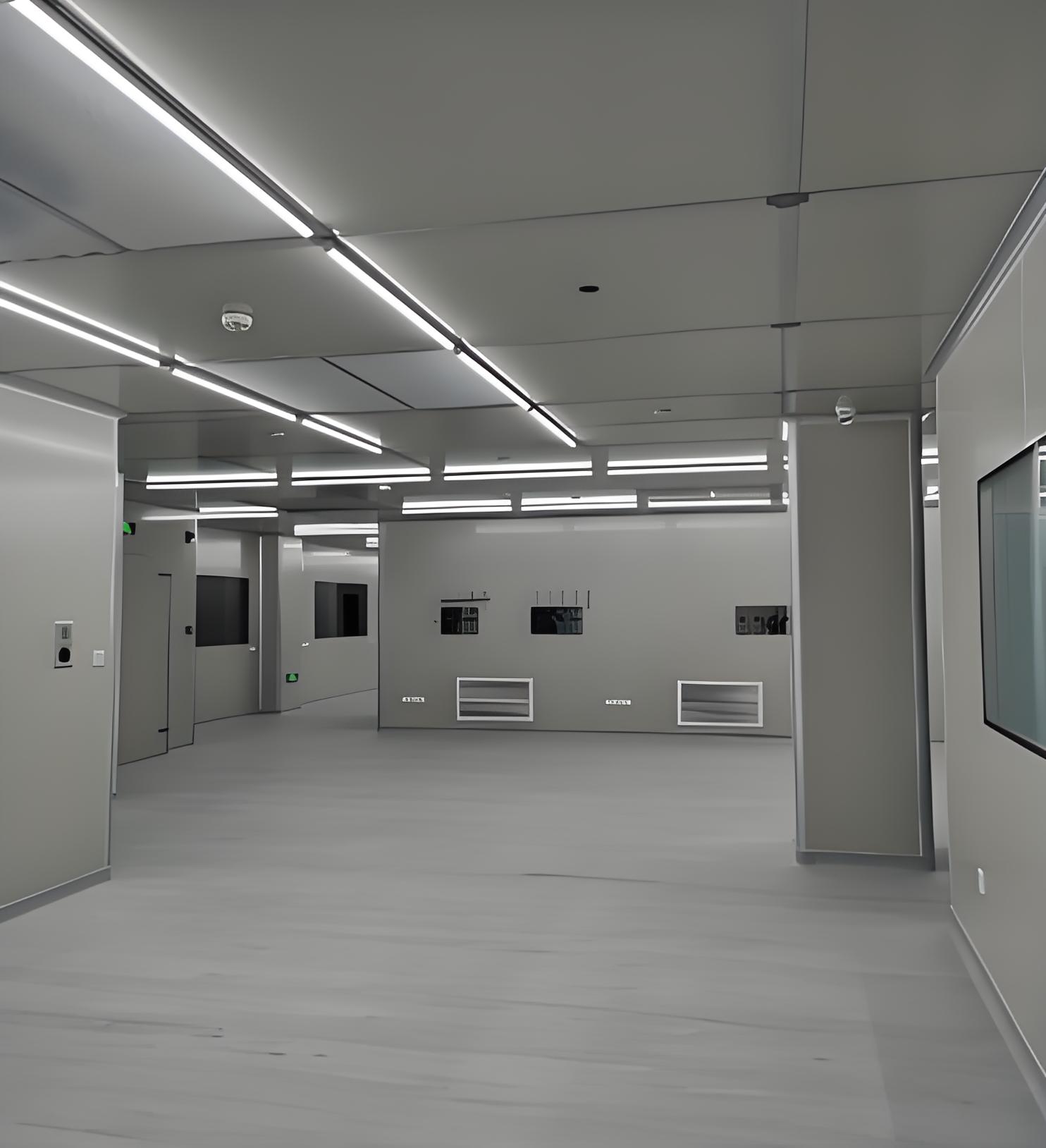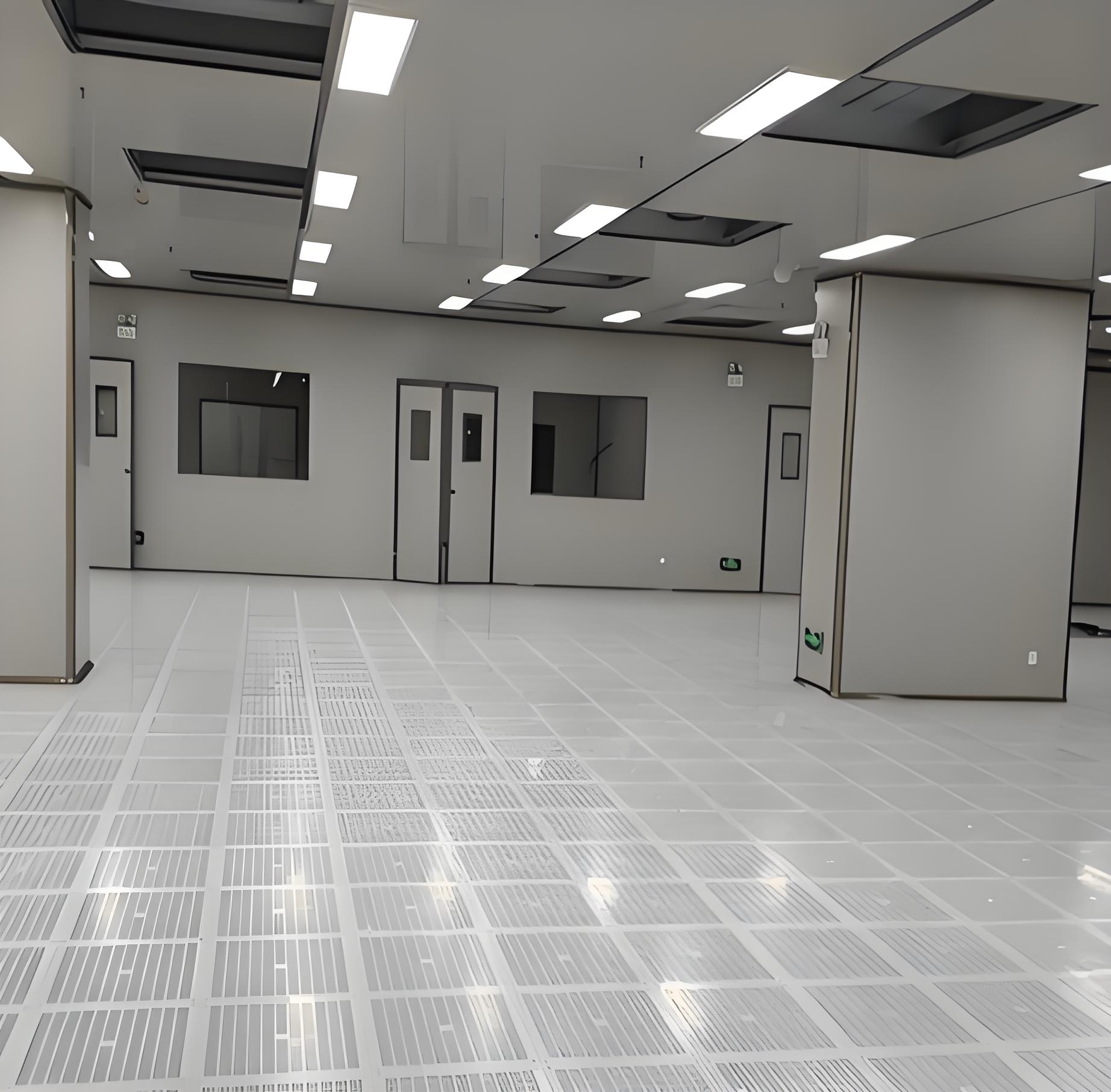




In today's highly regulated industries, from pharmaceuticals to electronics manufacturing, maintaining a pristine controlled environment is non-negotiable. At the heart of these systems lies the clean room diffuser, a component often overlooked but critical for distributing filtered air evenly to minimize contamination. However, achieving optimal cleanroom performance isn't just about the diffuser itself; it involves a synergy with other elements like doors and filters. For instance, ISO Class cleanroom doors and GMP door requirements ensure that ingress and egress points don't compromise air quality, while GMP cleanroom HEPA filter units work in tandem with diffusers to uphold stringent standards. This article delves into how clean room diffuser systems integrate with doors and filters, covering aspects from selection to manufacturing, including insights on ISO 14644 cleanroom door specifications, Custom cleanroom door design, and practical advice on how to select cleanroom ceiling diffuser. Whether you're looking at Cleanroom door manufacturers or planning to Buy Fan Filter Unit, understanding these interconnections is key to designing an efficient cleanroom that meets regulatory demands.

A clean room diffuser is a specialized device installed in cleanroom ceilings or walls to distribute HEPA or ULPA-filtered air in a controlled, laminar or turbulent flow, depending on the application. Its primary function is to ensure uniform air distribution, which helps in removing airborne particles and maintaining the required cleanliness levels, such as those outlined in ISO 14644 standards. Unlike standard HVAC diffusers, clean room variants are designed to minimize turbulence and prevent particle accumulation, making them essential in environments where even microscopic contaminants can lead to product defects or health hazards. For example, in pharmaceutical settings adhering to GMP door requirements, the diffuser must complement door seals to avoid cross-contamination. The importance of a clean room diffuser extends beyond air distribution; it impacts energy efficiency and operational costs, as improper selection can lead to increased filter load and frequent maintenance. When integrated with components like ISO Class cleanroom doors, the diffuser helps create a balanced pressure cascade, ensuring that air flows from cleaner to less clean areas, thus safeguarding the entire environment.
ISO Class cleanroom doors are not just entry points; they are critical barriers that maintain the integrity of a controlled environment. These doors are designed to meet specific ISO classifications, such as ISO Class 5 for highly sensitive areas, which dictate parameters like air changes per hour and particle counts. A well-designed door prevents air leakage, minimizes turbulence, and supports the airflow patterns established by the clean room diffuser. For instance, in a facility with GMP cleanroom HEPA filter systems, doors must feature tight seals and smooth surfaces to avoid harboring particles. Moreover, ISO 14644 cleanroom door standards provide guidelines on materials, construction, and testing, ensuring that doors do not become weak links in contamination control. When selecting ISO Class cleanroom doors, it's essential to consider factors like swing direction, automation, and compatibility with the cleanroom's pressure differentials. This integration ensures that the clean room diffuser can perform effectively without disruptions from door operations, ultimately supporting compliance and efficiency.
GMP door requirements are stringent guidelines derived from Good Manufacturing Practices (GMP), which are essential in industries like pharmaceuticals, biotechnology, and food processing. These requirements focus on ensuring that doors do not introduce contaminants or compromise product safety. Key aspects include the use of non-shedding materials, such as stainless steel or coated aluminum, and designs that facilitate easy cleaning and disinfection. Doors must also align with ISO 14644 cleanroom door standards to maintain ISO classifications. For example, a door in a GMP-compliant cleanroom might feature vision panels for monitoring without entry, and interlocking systems to prevent simultaneous opening of multiple doors, which could disrupt airflow from the clean room diffuser. Additionally, GMP door requirements often mandate validation and documentation, including pressure decay tests and particle counts during operation. By adhering to these standards, facilities can ensure that their doors support the overall contamination control strategy, working seamlessly with clean room diffuser systems and GMP cleanroom HEPA filter units to achieve consistent results.
The ISO 14644 cleanroom door standards are part of the broader ISO 14644 series, which defines cleanroom classifications based on airborne particle concentrations. These standards provide a framework for door design, emphasizing factors like airtightness, durability, and compatibility with cleanroom operations. For instance, an ISO 14644 cleanroom door must maintain the cleanroom's pressure differentials, which are critical for preventing unfiltered air ingress. This is particularly important when paired with a clean room diffuser, as any leak could undermine the diffuser's air distribution efficiency. The standards also cover aspects such as surface finish, which should be smooth and non-porous to resist particle accumulation, and operational mechanisms, like sliding or hinged designs, that minimize air disturbance. In practice, manufacturers often leverage these guidelines to develop Custom cleanroom door design solutions tailored to specific ISO classes. By integrating ISO 14644 cleanroom door specifications, facilities can enhance the performance of their clean room diffuser and GMP cleanroom HEPA filter systems, ensuring full compliance with international benchmarks.
Custom cleanroom door design offers tailored solutions that address unique operational needs, such as space constraints, high-traffic areas, or specialized industry requirements. Unlike off-the-shelf options, custom doors can be engineered to integrate perfectly with a clean room diffuser and other components, optimizing airflow and contamination control. For example, in a laboratory requiring frequent equipment movement, a custom door might include a larger opening or automated features to reduce human intervention, thereby maintaining the cleanliness supported by the GMP cleanroom HEPA filter. Additionally, Custom cleanroom door design allows for material selection that aligns with GMP door requirements, such as antimicrobial coatings or fire-resistant properties. This approach also facilitates compatibility with existing systems, like when you Buy Fan Filter Unit or work with Cleanroom diffuser manufacturers to ensure cohesive installation. By investing in customization, facilities can achieve higher efficiency, reduce long-term costs, and adapt to evolving standards, making it a smart choice for dynamic environments.

Choosing the right Cleanroom door manufacturers is crucial for ensuring that doors meet the necessary standards and perform reliably over time. Reputable manufacturers typically have experience with ISO Class cleanroom doors and GMP door requirements, offering products that are certified and tested for compliance. When evaluating Cleanroom door manufacturers, consider factors like their portfolio of ISO 14644 cleanroom door solutions, customer reviews, and ability to provide Custom cleanroom door design services. It's also important to assess their manufacturing processes, such as whether they use quality materials and conduct rigorous testing for leaks and durability. A good manufacturer will understand how their doors interact with clean room diffuser systems and can provide guidance on integration. For instance, they might recommend doors with low-profile sills to complement the airflow from a clean room diffuser, or suggest models that align with plans to Buy Fan Filter Unit. By partnering with trusted Cleanroom door manufacturers, facilities can mitigate risks and ensure that their cleanroom remains compliant and efficient.
GMP cleanroom HEPA filter units are fundamental to maintaining air quality in controlled environments, working closely with clean room diffuser systems to remove particles as small as 0.3 microns with 99.97% efficiency. These filters are designed to meet Good Manufacturing Practices, ensuring they do not shed fibers or introduce contaminants themselves. In a typical setup, the GMP cleanroom HEPA filter is installed in the air handling unit or as part of a fan filter unit (FFU), and the clean room diffuser distributes the filtered air uniformly across the room. This collaboration is vital for achieving ISO classifications, as any deficiency in filtration can compromise the entire system. For example, if a clean room diffuser is poorly matched with the filter, it might cause uneven airflow, leading to dead zones where particles accumulate. Therefore, when you Buy Fan Filter Unit, it's essential to verify that it includes a GMP cleanroom HEPA filter and is compatible with your diffuser design. Regular testing and maintenance, such as particle count checks and filter integrity tests, are also necessary to sustain performance, highlighting the interdependence between filters, diffusers, and doors.
Cleanroom diffuser manufacturers play a key role in providing components that meet specific cleanroom needs, from basic models to custom designs. When selecting Cleanroom diffuser manufacturers, look for those with expertise in how to select cleanroom ceiling diffuser options based on factors like room size, airflow requirements, and ISO class. A reputable manufacturer will offer products that integrate seamlessly with ISO Class cleanroom doors and GMP cleanroom HEPA filter systems, ensuring balanced air distribution and minimal turbulence. They might also provide services like computational fluid dynamics (CFD) analysis to model airflow patterns and recommend the best diffuser configuration. Additionally, Cleanroom diffuser manufacturers can advise on material choices, such as aluminum or stainless steel, which align with GMP door requirements for cleanability and durability. By collaborating closely with these experts, facilities can avoid common pitfalls, such as oversizing diffusers, which could strain the GMP cleanroom HEPA filter, or choosing designs that conflict with door operations. This partnership is especially valuable when planning to Buy Fan Filter Unit, as it ensures all components work in harmony.
When you decide to Buy Fan Filter Unit (FFU) for your cleanroom, it's important to consider how it will integrate with existing elements like the clean room diffuser and doors. An FFU typically combines a fan and a HEPA or ULPA filter in a compact unit, providing localized air filtration and distribution. To make an informed purchase, start by assessing the unit's compatibility with your clean room diffuser; for instance, ensure the airflow rates match to avoid pressure imbalances that could affect ISO Class cleanroom doors. Look for FFUs that feature GMP cleanroom HEPA filter certifications and energy-efficient motors to reduce operational costs. It's also wise to evaluate the unit's noise levels, control options (e.g., variable speed), and ease of maintenance, as these factors impact long-term usability. If you're working with Cleanroom diffuser manufacturers, they can provide insights on how to select cleanroom ceiling diffuser configurations that pair well with FFUs, perhaps suggesting modular designs for flexibility. Ultimately, buying the right FFU involves a holistic approach that considers the entire cleanroom ecosystem, from filters to doors, ensuring optimal performance and compliance.
Understanding how to select cleanroom ceiling diffuser options is critical for achieving desired airflow patterns and cleanliness levels. The selection process begins with assessing the cleanroom's ISO classification and airflow requirements—for example, laminar flow diffusers are ideal for ISO Class 5 environments, while turbulent flow might suffice for lower classes. Key factors include the diffuser's size, shape, and material, which should align with GMP door requirements for cleanability and durability. It's also essential to consider the integration with other components, such as ISO Class cleanroom doors and GMP cleanroom HEPA filter systems; for instance, a diffuser placed near a door should account for air disruptions during entry and exit. When consulting Cleanroom diffuser manufacturers, ask about performance data, like air velocity and pressure drop, to ensure compatibility with your FFU if you plan to Buy Fan Filter Unit. Additionally, think about future scalability—custom designs might be necessary for unique layouts. By following a methodical approach to how to select cleanroom ceiling diffuser, you can enhance contamination control, reduce energy consumption, and support overall cleanroom integrity.
Q1: What is the primary function of a clean room diffuser in a controlled environment?
A1: The primary function of a clean room diffuser is to distribute HEPA or ULPA-filtered air evenly throughout the cleanroom, maintaining laminar or turbulent flow to control particle levels and prevent contamination. It works in tandem with components like GMP cleanroom HEPA filter units and ISO Class cleanroom doors to ensure consistent air quality and compliance with standards such as ISO 14644.
Q2: How do GMP door requirements differ from standard cleanroom door specifications?
A2: GMP door requirements are more stringent than standard specifications, as they focus on aspects like non-shedding materials, easy cleanability, and validation protocols to prevent contamination in regulated industries. These requirements often align with ISO 14644 cleanroom door standards but include additional criteria for documentation and testing to meet Good Manufacturing Practices, ensuring doors do not compromise the performance of a clean room diffuser or filter systems.
Q3: Why is custom cleanroom door design important for specialized applications?
A3: Custom cleanroom door design is important because it addresses unique operational needs, such as high traffic, space limitations, or specific industry regulations, by tailoring doors to integrate seamlessly with clean room diffuser and filter setups. This customization enhances contamination control, improves efficiency, and ensures compatibility with other components, making it easier to meet GMP door requirements and maintain ISO classifications.
Q4: What should I look for when buying a Fan Filter Unit (FFU) for my cleanroom?
A4: When you Buy Fan Filter Unit, consider factors like the inclusion of a certified GMP cleanroom HEPA filter, airflow compatibility with your clean room diffuser, energy efficiency, noise levels, and control features. It's also important to ensure the FFU aligns with your cleanroom's ISO class and door systems to avoid disruptions in air pressure and contamination control. Consulting with Cleanroom diffuser manufacturers can help in selecting a unit that fits your specific needs.
Q5: How can I ensure proper integration between cleanroom doors and diffusers?
A5: To ensure proper integration, coordinate with Cleanroom door manufacturers and Cleanroom diffuser manufacturers during the design phase, focusing on aspects like door seals, airflow patterns, and pressure differentials. Test the interaction between ISO Class cleanroom doors and the clean room diffuser through methods like smoke tests or pressure decay checks, and adhere to GMP door requirements and ISO standards to maintain a balanced environment that minimizes contamination risks.
In conclusion, a clean room diffuser is a cornerstone of cleanroom functionality, but its effectiveness hinges on a well-orchestrated system that includes doors, filters, and compliant designs. By understanding the interplay between components like ISO Class cleanroom doors, GMP cleanroom HEPA filter units, and custom options, facilities can achieve robust contamination control. Whether you're engaging with Cleanroom diffuser manufacturers or planning to Buy Fan Filter Unit, a comprehensive approach ensures that every element supports your cleanroom's goals, driving efficiency and regulatory adherence in today's demanding industries.